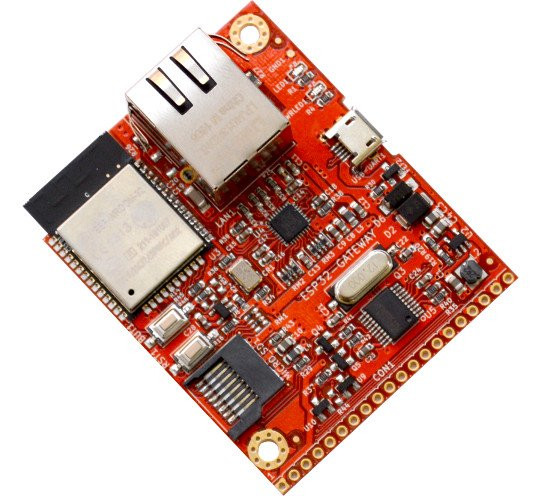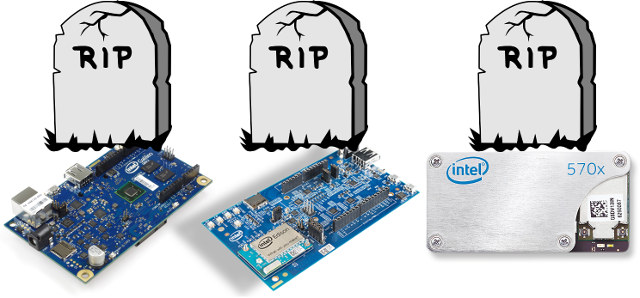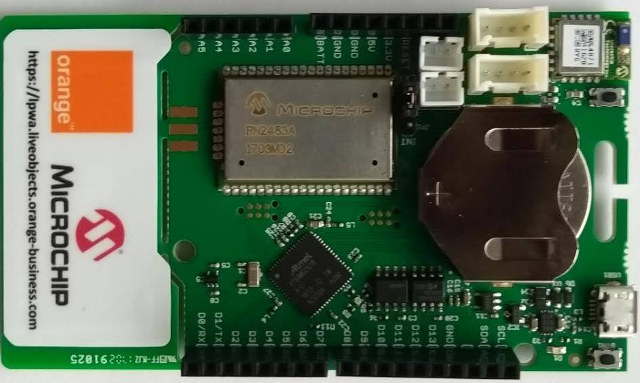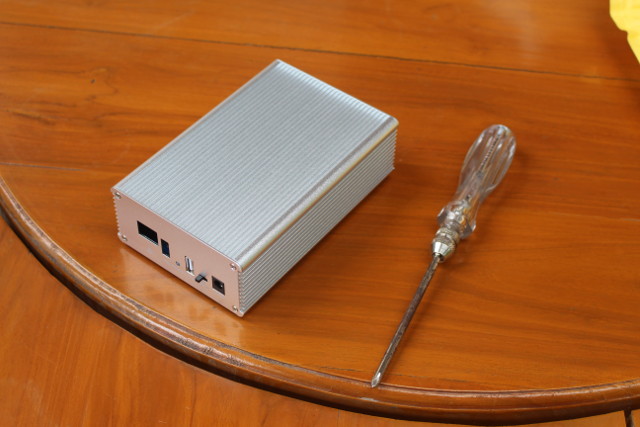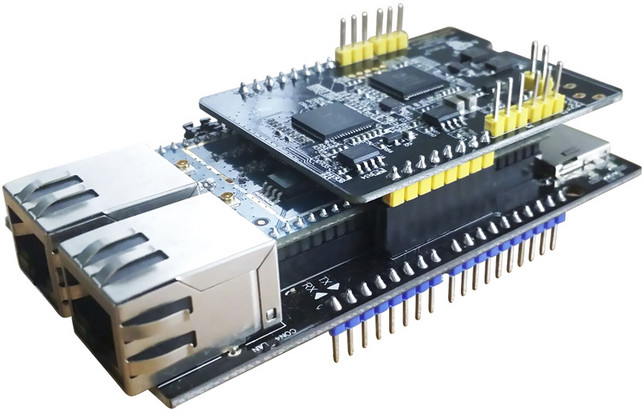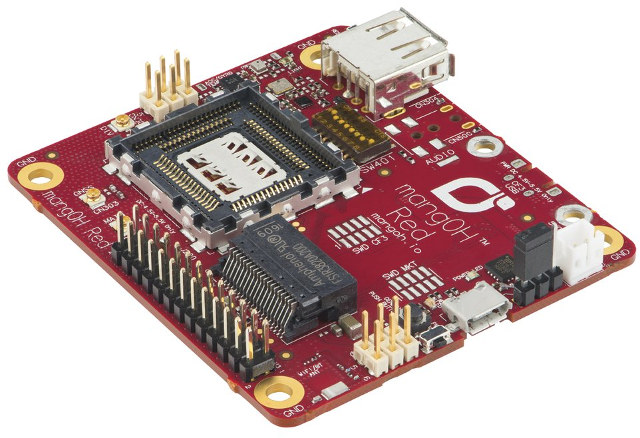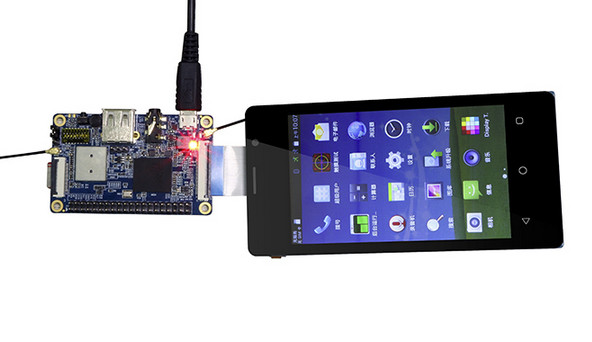With its Snapdragon 410E processor, Inforce 6309 single board computer is similar to Qualcomm DragonBoard 410c board, except it adds a Gigabit Ethernet port with optional PoE/RS484 add-on, switches HDMI with micro HDMI, replaces Low and High speed connectors with LVDS, dual MIPI-DSI, and 26-pin IO onnector, as well as offering an extended temperature range. It’s also designed for production, rather than just development, but it normally costs $126 instead of $75 for Qualcomm’s 96Boards compliant board. Inforce is now bringing that price down with a summer promotion allowing you to buy the board for $89 using summer coupon, excluding potential taxes, and shipping. I’ll reproduce the specifications below for reference: SoC- Qualcomm Snapdragon 410/410E (APQ8016/APQ8016E) quad-core ARM CortexA53 @ 1.2 GHz with Adreno 306 GPU and Hexagon QDSP6 @ 700 MHz System Memory – 1GB LPDDR3 @ 533MHz, single-channel 32-bit (4.2GBps) Storage – 8GB eMMC flash (eMCP package with […]
Olimex Launches 22 Euros ESP32-GATEWAY Board with Ethernet, WiFi and Bluetooth LE
Olimex has just launched ESP32-GATEWAY board, as cost-down version of their ESP32-EVB board, still with Ethernet, WiFi, and Bleutooth LE, but without any relays, CAN bus, nor IR control, less I/Os, and a smaller footprint. Olimex ESP32-GATEWAY specifications: Wireless Module – ESP32-WROOM32 module with 802.11 b/g/n WiFi and Bluetooth LE Wired Connectivity – 10/100M Ethernet with RJ45 jack (via LAN8710A) External Storage – micro SD slot Expansion – 20-pin GPIO connector USB – 1x micro USB port for debugging (CH340T) and power Misc – Reset and user buttons Power Supply – 5V via micro USB port Dimensions – 62 x 50 mm Another change is the lack of a LiPo charger to run the board from batteries. Just like most Olimex boards, ESP32-GATEWAY is open source hardware with KiCAD design files available on Github. The software directory is still empty, but Ethernet demo code using ESP32-IDF has been pushed for […]
Intel Issues End-of-Life Notices for Galileo / Galileo 2, Edison and Joule Boards & Modules
While I’m not sure many of my readers are using them, Intel introduced several IoT development kits and modules over the years, with products like Intel Galileo, followed by Galileo 2, Edison module development board all based on Quark processors, and more recently Intel Joule modules powered by Intel Atom T550x / T570x processors. The three boards / modules and corresponding modules will soon be no more, as Intel issues three end-of-life (EOL) notices for: Intel Galileo Board, and Intel Galileo Gen2 Board Products – PDF Select Intel Edison Compute Module, Intel Edison Breakout Board, Intel Edison Kit for Arduino, and Intel Edison Breakout Board Kit Products – PDF Intel Joule 570x Compute Module, Intel Joule 550x Compute Module, Intel Joule 570x Developer Kit and, Intel Joule 550x Developer Kit Products – PDF All three follow the same “forecasted key milestones”: June 16, 2017 – Product Discontinuance Program Support Begins […]
Microchip based Orange LoRa Explorer Kit Connects to Orange’s own LoRaWAN Network
You’d think Telecom operators with all infrastructure in place would focus their IoT efforts on LTE Cat M1 or LTE Cat NB-IoT, but Orange has setup its own LoRa network in France with the aim of achieving national coverage by December 2017, at which time they’ll also test interconnection and roaming with other European operators. The company has also launched the LoRa Explorer Kit based on Microchip solutions, and designed by SODAQ. Orange LoRa Explorer Kit specifications: MCU – Microchip Atmel SAMD21 ARM Cortex M0+ MCU @ 48 MHz with 256KB flash, 32KB RAM, up to 16KB EEPROM by emulation Storage – 4Mbit serial flash (Microchip SST25PF040C) Connectivity Microchip RN2483A LoRa module + PCB antenna Microchip RN4871 Bluetooth 4.2 module (BLE) with ceramic antenna Security – Microchip ATECC508A1 crypto chip to securely store LoRa keys. USB – 1x micro USB port for charging and programming Expansion – “Arduino M0” compatible headers with 10-bit […]
NanoPi NEO NAS Kit Review – Assembly, OpenMediaVault Installation & Setup, and Benchmarks
NAS Dock v1.2 for Nano Pi NEO / NEO 2 is, as the name implies, a complete mini NAS kit for 2.5″ drive for NanoPi NEO or NEO 2 board. The NEO 2 board is strongly recommended, since it’s not much more expensive, but should deliver much better results due to its Gigabit Ethernet interface. I’ve received two of those kits together with several other boards & accessories from FriendlyELEC, and today I’ll show how to assemble the kit, configure OpenMediaVault, and run some benchmarks. NAS Kit V1.2 Assembly with NanoPi NEO 2 Board The only extra tool you’ll need is a screwdriver, and potentially a soldering iron as we’ll see further below. The metal box is stuff wih accessories so the first thing is to open one or two sides to take out the content. We have the mainboard, NanoPi NEO back plate, NanoPi NEO 2 back plater, a […]
Design Amazon Alexa Gateways, Robots and Smart Speakers with WisCore Modular Development Kit
RAK Wireless has launched a new development board powered by Mediatek MT7628A processor running OpenWrt with built-in WiFi and Ethernet connectivity, and audio codec and microphone to support Amazon Alexa voice service. Bluetooth, Zigbee, and Z-wave will also be supported via UART modules. Wiscore Specifications: Processor – Mediatek MT7628A MIPS24KEc CPU @ up to 580MHz System Memory – 128MB DDR2 (64 MB optional) Storage – 16 MB flash + micro SD card Audio MicroSemi ZL38062 for audio in and out MicroSemi ZL38067 to handle “Alexa” keyword single or dual digital microphone up to 5 meter range Far field voice wake up Support for echo cancellation Connectivity 802.11 b/g/n WiFi 2×2 MIMO up to 300 Mbps 2x 10/100M Ethernet (LAN and WAN) Optional UART modules for Bluetooth, ZigBeem Z-Wave USB – 1x USB 2.0 host port Expansion – Arduino headers with UART, I2C, SPI and GPIOs Power Supply – 5V via […]
MangOH Red Open Source Hardware Board Targets Cellular Industrial IoT Applications
Sierra Wireless has announced MangOH Red open source hardware platform designed for IIoT (Industrial IoT) applications with a snap-in socket for 2G to 4G & LTE-M/NB-IoT modules, built-in WiFi and Bluetooth, various sensors, a 26-pin expansion header, and more. MangOH Red board specifications: Snap-in socket to add any CF3-compatible modules, most of which based on Qualcomm MDM9215 ARM Cortex A5 processor including: Airprime WP7502 LTE Cat 3, HSPA, WCDMA, EDGE/GPRS module Airprime WP7504 LTE Cat 3, HSPA, WCDMA, CDMA module Airprime WP7601 LTE Cat 4 module Airprime WP7603 LTE Cat 4, WCDMA module Airprime WP8548 HSPA, WCDMA, EDGE/GPRS, and GNSS module AirPrime HL6528RD quad-band GSM/GPRS Embedded Wireless Module designed for the automotive market And more…. Storage – micro SD slot Wireless MCU Module – Wi-Fi 802.11 b/g/n and Bluetooth 4.2 BLE module with an ARM Cortex-M4 core MCU (Mediatek MT7697) providing access to real-time I/Os Wireless Connectivity “Accessories” Micro SIM card […]
$10 Smartphone Display Released for Orange Pi 2G-IoT Board
Orange Pi 2G-IoT is a low cost ARM Linux board with 2G, and WiFi & Bluetooth connectivity, basically with the guts of a smartphone minus the display and battery. Shenzhen Xunlong has now released a 800×480 display with capacitive touch support for the board available in black or white, and selling for $9.98 plus shipping. The board is too thick to make a smartphone out of it, but it reminds of the very expensive Qualcomm MDP’s (Mobile Development Platform), so Android app developers may find some use to test their apps on lower end hardware. It could also be used for control panels that do not need to be very thin. Orange Pi 2G-IoT display specifications: 3.5″ TFT Display with 800×480 resolution Capacitive touchscreen Case with the Back, Home, and Recent buttons Dimensions – With case: 57.14 x 96.85 x 2.0 mm; Display only: 51.84 x 86.4mm Software support is […]



